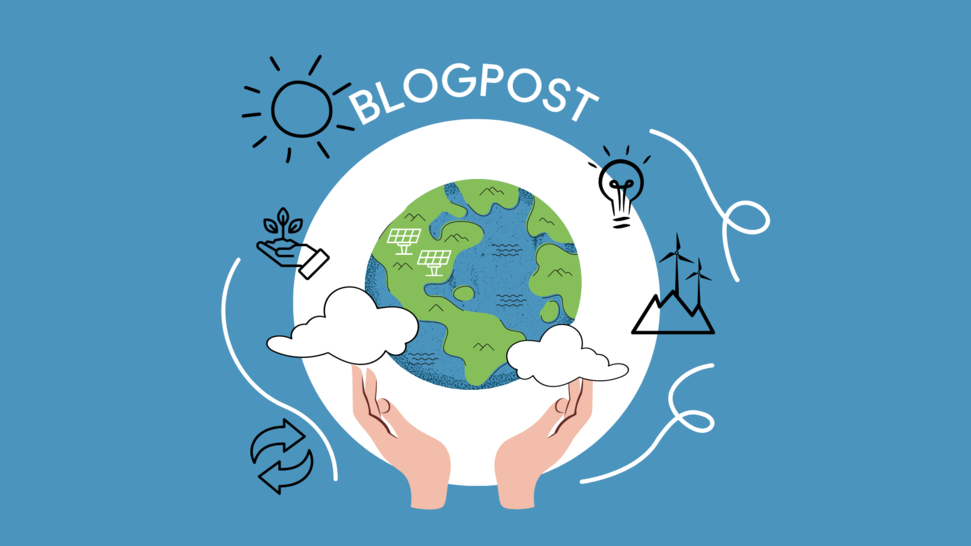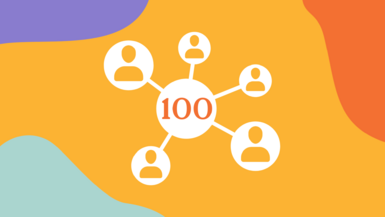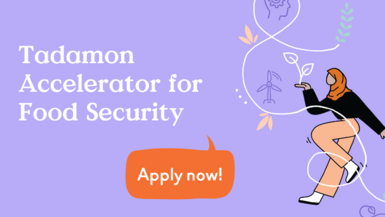
In a world as turbulent and challenging as the one we inhabit today, our future often seems uncertain. Indeed, in recent years humanity has been confronted by a rapidly changing climate, deepening poverty, and ongoing public health emergencies. We can only imagine how overwhelming this must be for the people at the frontline – those changemakers and trailblazers that insist on, despite all odds, working towards the collective betterment of society.
That is why we at Tadamon invited Sanna Rekola, Specialist on Foresight, Insight, and Strategy at Sitra, the Finnish Innovation Fund, to join us during our ninth Tadamon Talks – our webinar series following the trends in nonprofit best practices and alternative finance for civil society empowerment. Rekola’s work is centered around answering the question: how can we make major changes for a better future?
In this week’s blog post, we discuss Rekola’s insights and explore the opportunities presented by futures thinking and foresight for changemakers.
—
Like us, you might have been wondering, what do foresight and futures thinking mean? Simply put, foresight means “systematically thinking about the future”. There are three fundamental principles behind foresight and futures thinking:
- There are many possible futures
- We can influence them
- We have a responsibility to think long-term.
However, the question remains, how do we approach future thinking? Well, it is straightforward.
- First, we must Prepare: we need to find out what changes are happening around us. We can do this by looking at reports, studying trends and megatrends, and trying to predict what might happen next.
- Then we must Plan: we can strategize about what we can do, and how we can create the most desirable impact for ourselves and others.
- Most importantly, we must consider Novelty: we must ask ourselves whose interests are present in our assumptions about the future. What do we question when we think about the future, and more critical still, what is left unquestioned?
Why do we Need Futures Thinking in Changemaking?
In the words of revered British singer David Bowie, “tomorrow belongs to those who can hear it coming”.
The quote captures one of Bowie’s crucial talents: to intuit the future and infuse it into our present culture. At its core, this is why future thinking is necessary for changemaking – it allows us to build resilience and agility in the face of change and challenges. Most importantly, future thinking prepares us so that we may empower others and cultivate a common vision.
Indeed, Rekola echoed the spirit of this quote, explaining that “for changemakers […] it is important to understand what is happening around us. We are used to scanning our operational environment, which is related to our goals, strategies, and work plans. However, it is very useful to […] think about futures in longer time frames”.
To this end, studying megatrends is vital – these are trends with notable effects on a global scale that exist presently, and which will likely continue in the future: for example, digitalization, climate change, aging populations, and so on. Looking at megatrends as a whole allows us to understand the tensions between different trends and to observe and address the causality between them. Only by looking at the bigger picture can we accurately make decisions for a fair, equitable, and sustainable future.
How to Apply Futures Thinking in Practice and Where to Start
“We need to question the present assumptions and dare to ask; what if?”
Rekola’s three tips for changemakers:
- Challenge existing assumptions about the future
- Imagine a preferred future
- Act and shape the future
One individual who applied these principles perfectly in their work was Elise M. Boulding, a Norwegian-born American Quaker sociologist, and futurist, involved in disarmament after World War II. Boulding was interested in imagining a responsible future. For her, this meant challenging general assumptions about the future by asking disarmament experts how a world without weapons would function.
Of course, this was a question that few had addressed and that even fewer could answer. Boulding took it upon herself to investigate the answer by holding workshops where participants were asked to imagine they traveled 30 years into the future and then describe how the world they imagined had been achieved. Then they were asked what they would do, from that point onwards, to work towards achieving their preferred future.
“For us to work towards a desirable future, we need to [envision] this future at a more detailed level,” says Rekola, “what things could be different and how, and what things could stay the same?”
Expand your mind
“What usually happens is that we look straight ahead, to the probable future, and think of [it] as a continuum of the present. If we widen our horizons, we can think about plausible and possible futures too," says Rekola.
And why stop there? Why not also manifest preferable futures – would you dare to imagine an ideal future?
As Rekola beautifully put it, “It is much easier to walk in the direction we want if we shed light there."
The Only Way to Change the World is by Acting
- Act in ways that influence human behavior – create new services and technologies that influence behavior
- Act to impact structures and institutions (through legislation and regulation)
- Act in a way that influences ways of thinking – worldviews and ideologies are challenging to impact, yet our ability to do this will determine whether or not we can create meaningful change.
If you are interested in future-oriented thinking and change-making but don’t know where to begin, this toolbox, created by Sitra, can help you recognize trends and emerging phenomena, imagine alternative futures, and link your future-oriented thinking to change-making.


